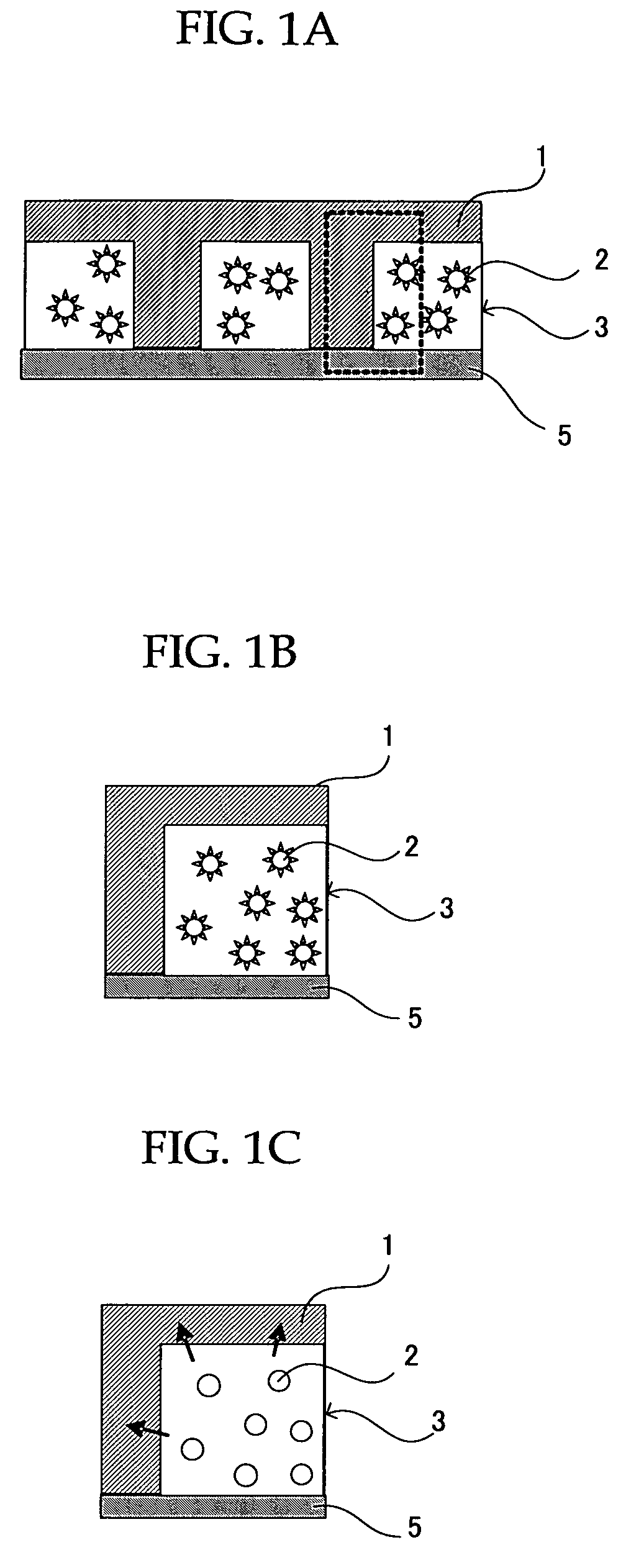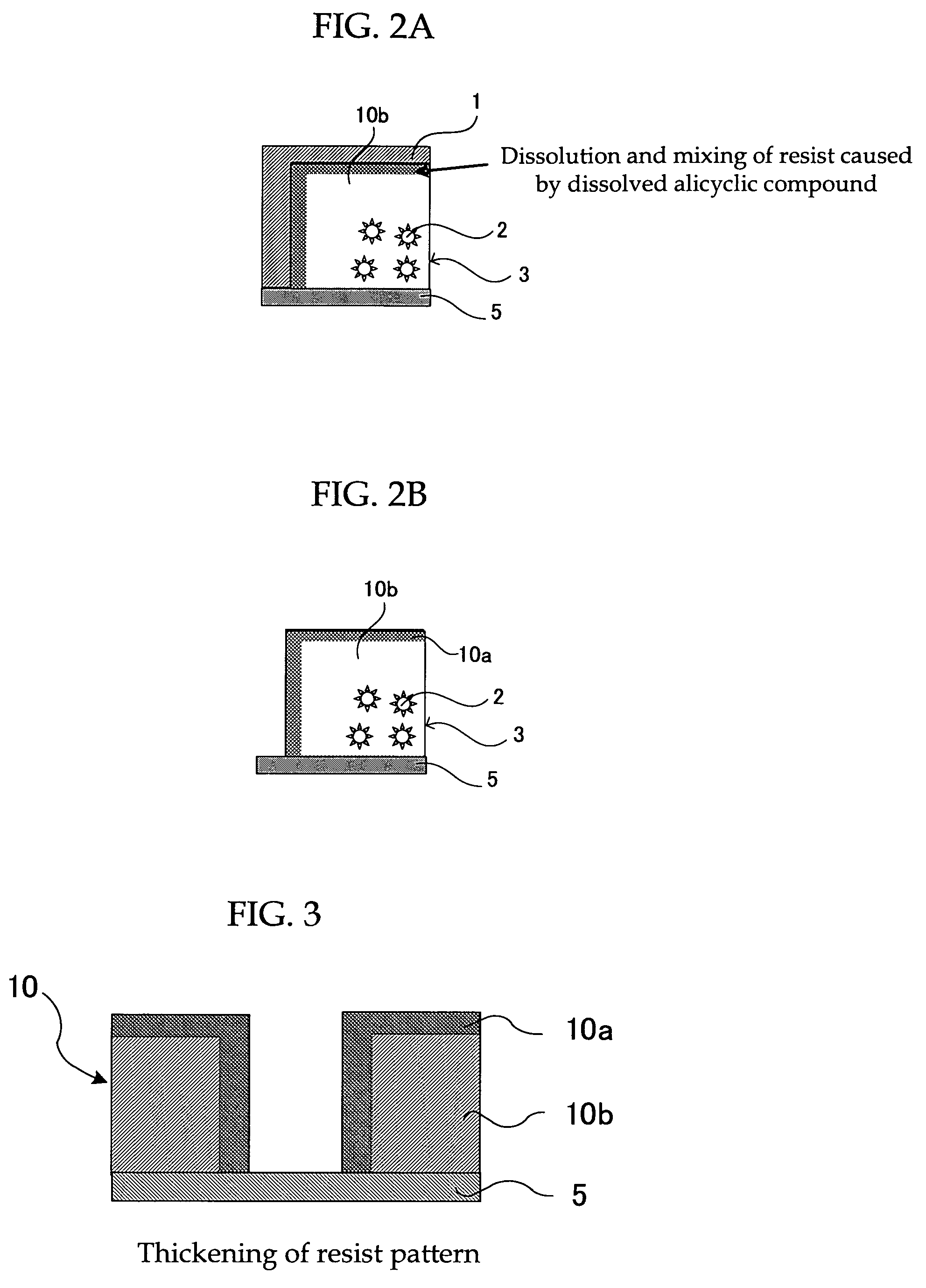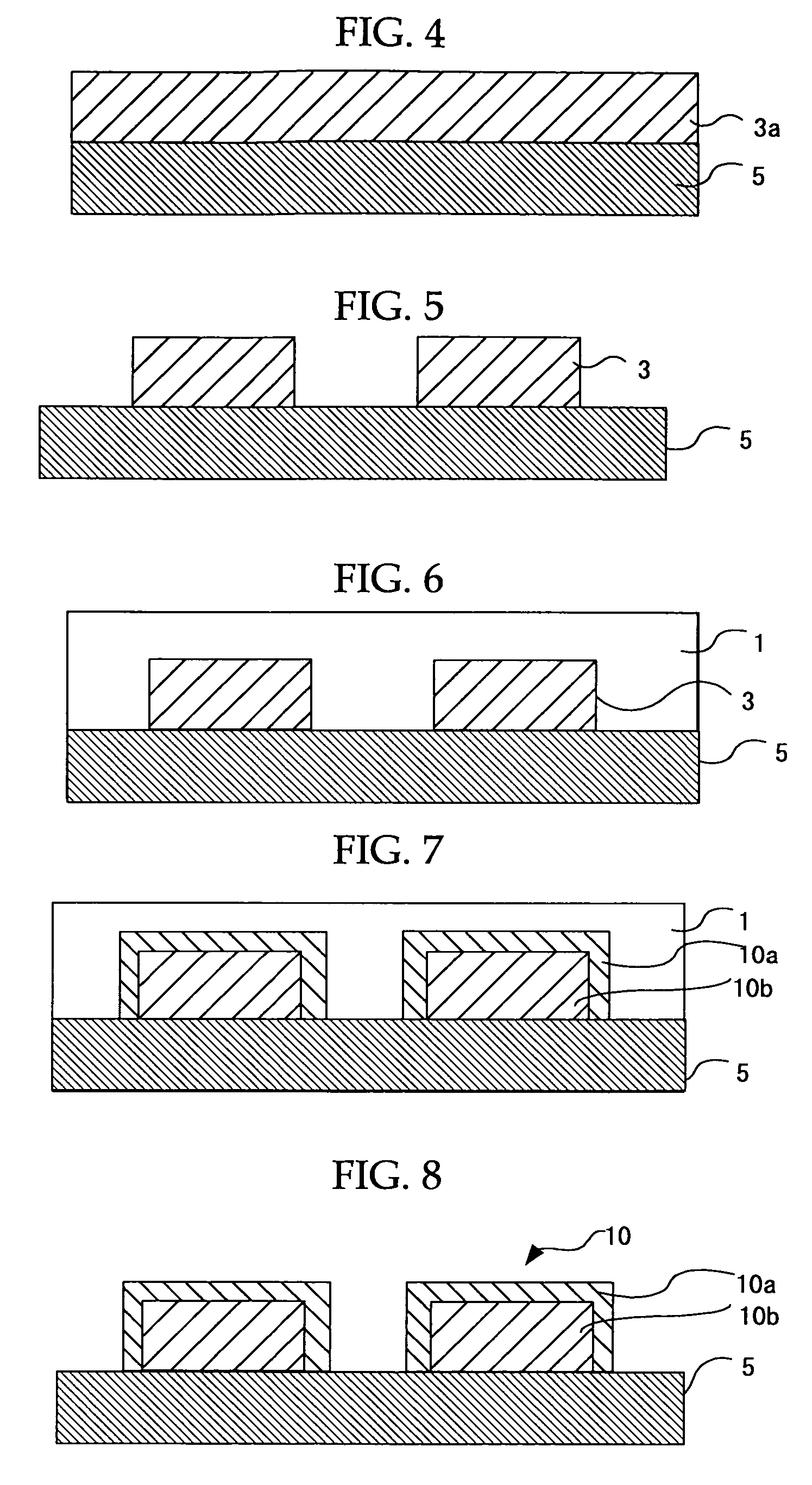Resist composition, method for forming resist pattern, and semiconductor device and method for manufacturing the same
a technology of resist pattern and composition, which is applied in the direction of photosensitive materials, instruments, photomechanical equipment, etc., can solve the problems of arf excimer, difficult to develop new resist materials suitable for short wavelength exposure, and high cost, and achieve the effect of thickening resist pattern, fine structure and exceeding exposure or resolution limits
- Summary
- Abstract
- Description
- Claims
- Application Information
AI Technical Summary
Benefits of technology
Problems solved by technology
Method used
Image
Examples
example 1
Preparation of Resist Composition
[0187]A resist composition having the following composition was prepared.
[0188]
Resin*1 12 parts by massTriphenylsulfonium nonafluorobutane sulfonate0.48 parts by massTrioctylamine0.01 parts by massNorbornanon*20.12 parts by massSurfactant*30.005 parts by mass Propyleneglycol methyl ether acetate 100 parts by mass*1resin represented by the following Structural Formula (9) which was synthesized by the method described in Example 13 in the section of Examples of Japanese Patent No. 3297272.*2norbornanon represented by the following Structural Formula (6), having a melting point of around 95° C.*3KP-341, available from Shin-Etsu Chemical Co., Ltd.Structural Formula (9)Structural Formula (6)
Formation of Resist Pattern
[0189]The thus prepared resist composition of the present invention was applied over the entire surface of a silicon wafer (available from Mitsubishi Material Corporation) by spin-coating at 3,500 rpm for 20 seconds, and the coated resist fi...
example 2
[0193]A thickened resist pattern was formed in the same manner as in Example 1 except that the resist pattern thickening material (AZ R500™, available from AZ Electronic Materials) suited for ArF excimer laser light was replaced by a resist pattern thickening material (AZ R600™, available from AZ Electronic Materials) suited for ArF excimer laser light. The variations of the pattern sizes in the narrow side direction and the wide side direction were calculated, respectively. The variations of the pattern size were 30 nm in the narrow side direction and 32 nm in the wide side direction. Accordingly, it was found that the use of the resist composition of the present invention allowed uniformly thickening the resist pattern and without depending on the components of the resist pattern thickening material.
example 3
[0195]A thickened resist pattern was formed in the same manner as in Example 1 except that the resist composition was prepared based on the following composition. The variations of the pattern sizes in the narrow side direction and the wide side direction were measured, respectively.
Preparation of Resist Composition
[0196]
ArF resist (AX5910, available from Sumitomo Chemical Co., Ltd.)5 g1-adamantylmethanol*13 mg*11-adamantylmethanol represented by the following Structural Formula (1), having a melting point of around 115° C.Note that as the ArF resist (AX5910) is a commercially available product, the exact concentration of the resin is unknown, however, the content of 1-adamantylmethanol to the mass of the base resin is estimated to be around 0.5% by mass.Structural Formula (1)
Formation of Resist Pattern
[0197]A resist pattern was formed in the same manner as in Example 1, by using the obtained resist composition. Over the surface of the thus obtained resist pattern, a resist pattern ...
PUM
| Property | Measurement | Unit |
|---|---|---|
| wavelength | aaaaa | aaaaa |
| wavelength | aaaaa | aaaaa |
| melting point | aaaaa | aaaaa |
Abstract
Description
Claims
Application Information
 Login to View More
Login to View More - R&D
- Intellectual Property
- Life Sciences
- Materials
- Tech Scout
- Unparalleled Data Quality
- Higher Quality Content
- 60% Fewer Hallucinations
Browse by: Latest US Patents, China's latest patents, Technical Efficacy Thesaurus, Application Domain, Technology Topic, Popular Technical Reports.
© 2025 PatSnap. All rights reserved.Legal|Privacy policy|Modern Slavery Act Transparency Statement|Sitemap|About US| Contact US: help@patsnap.com



